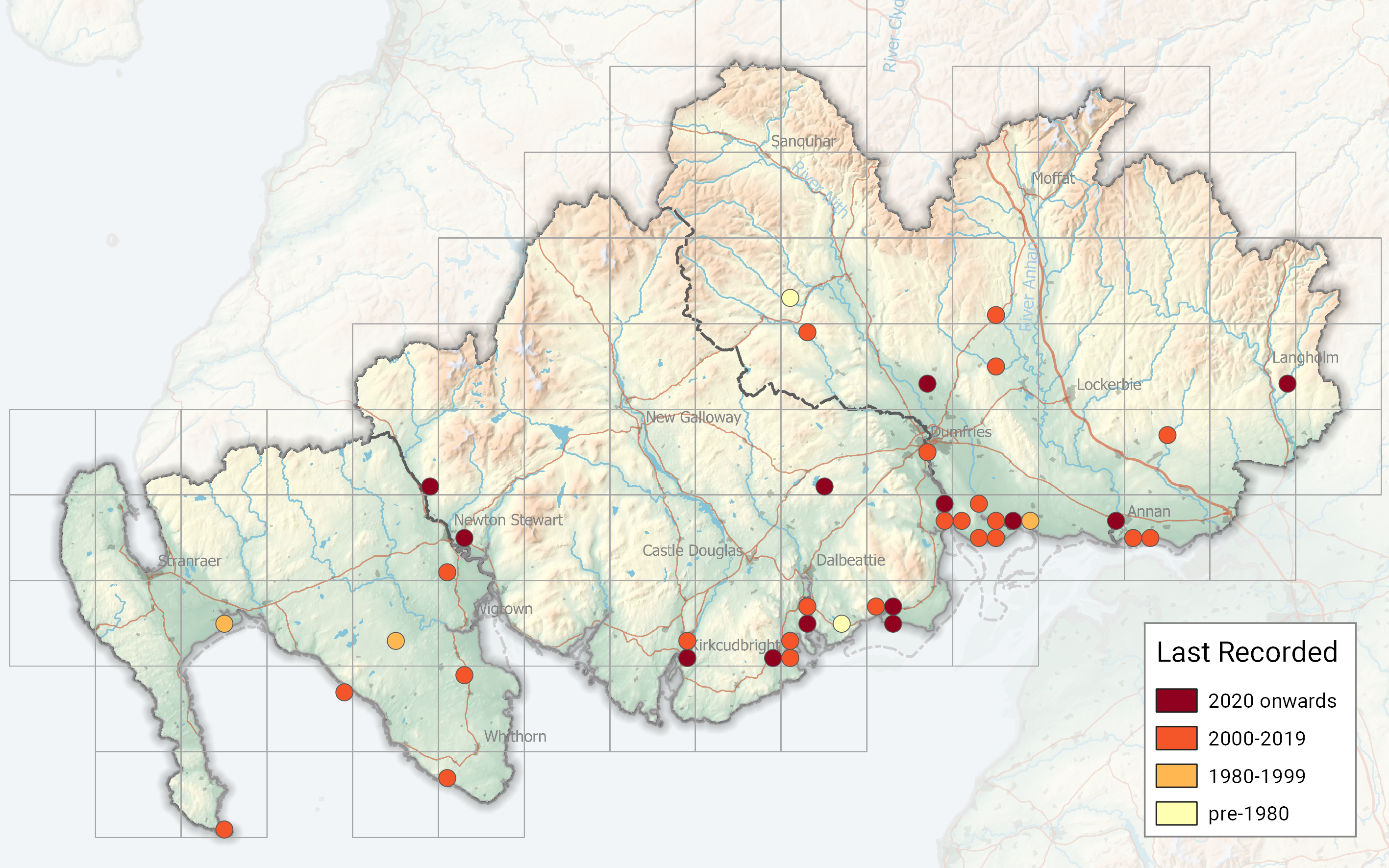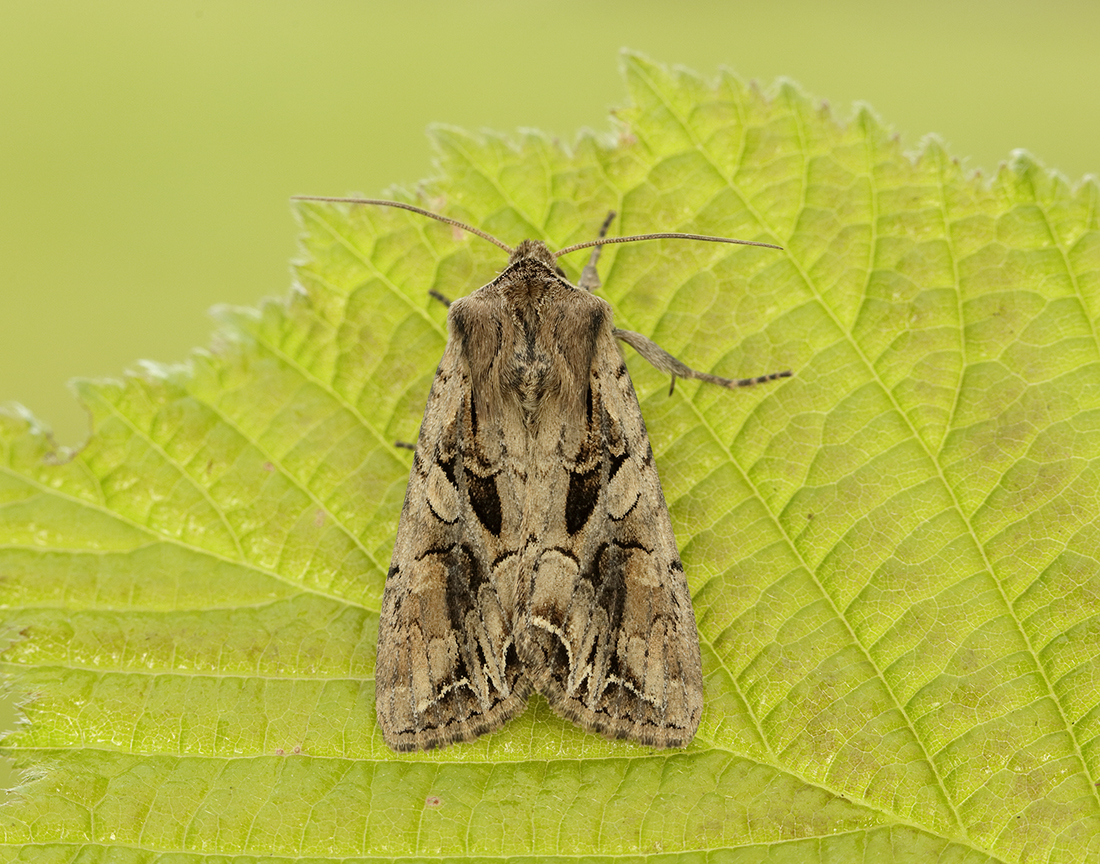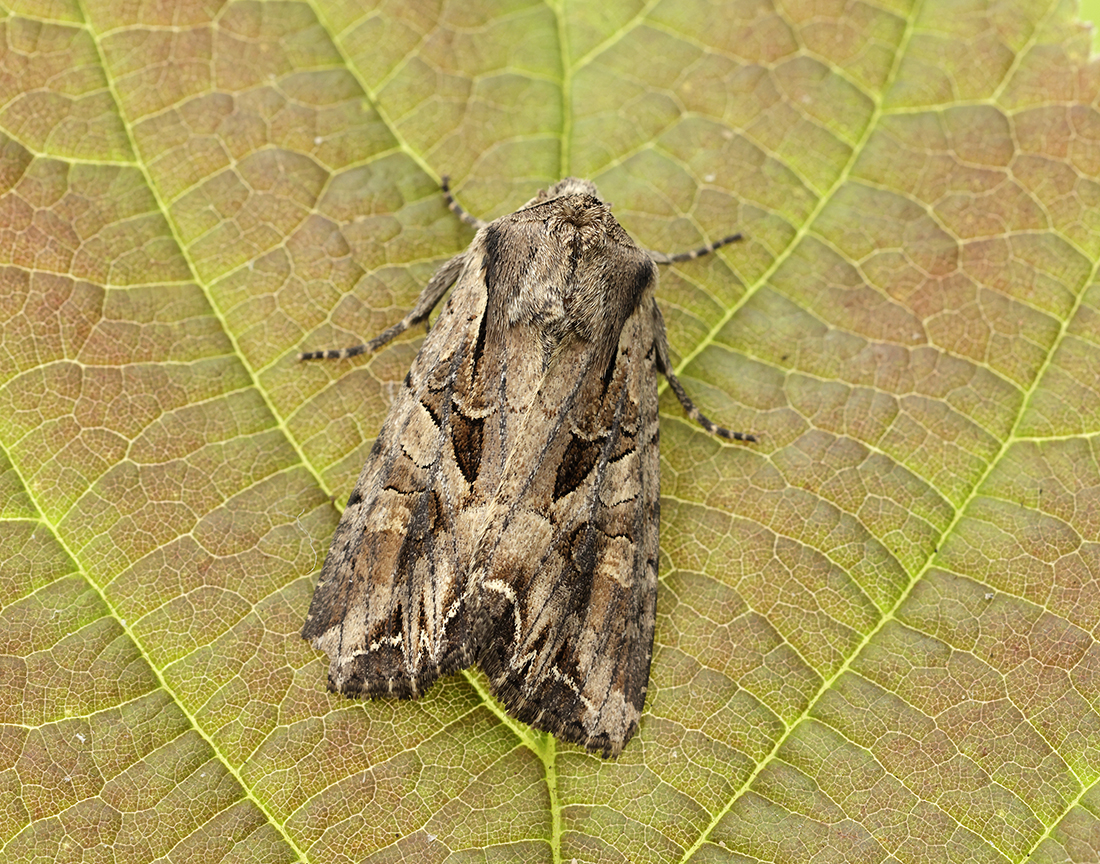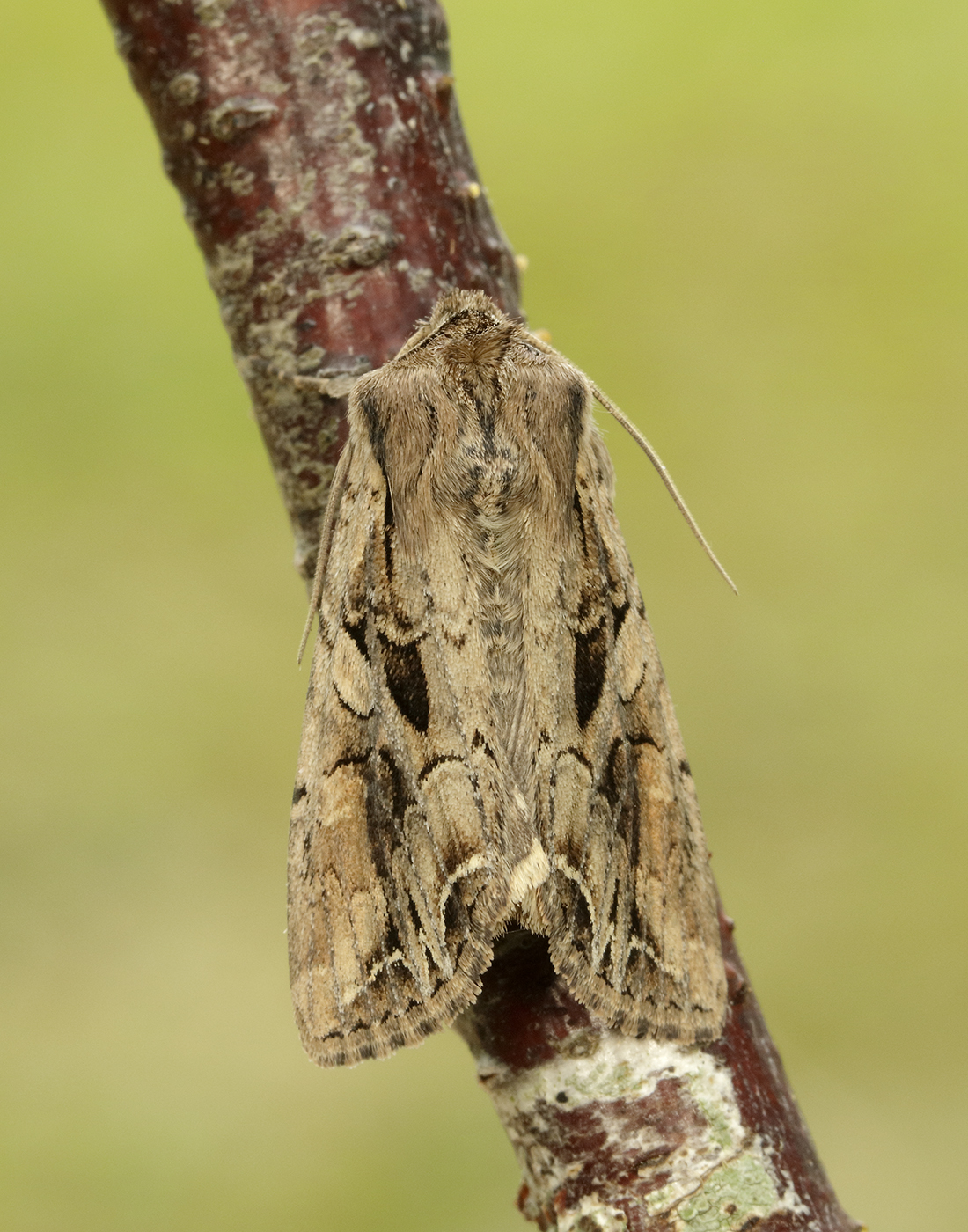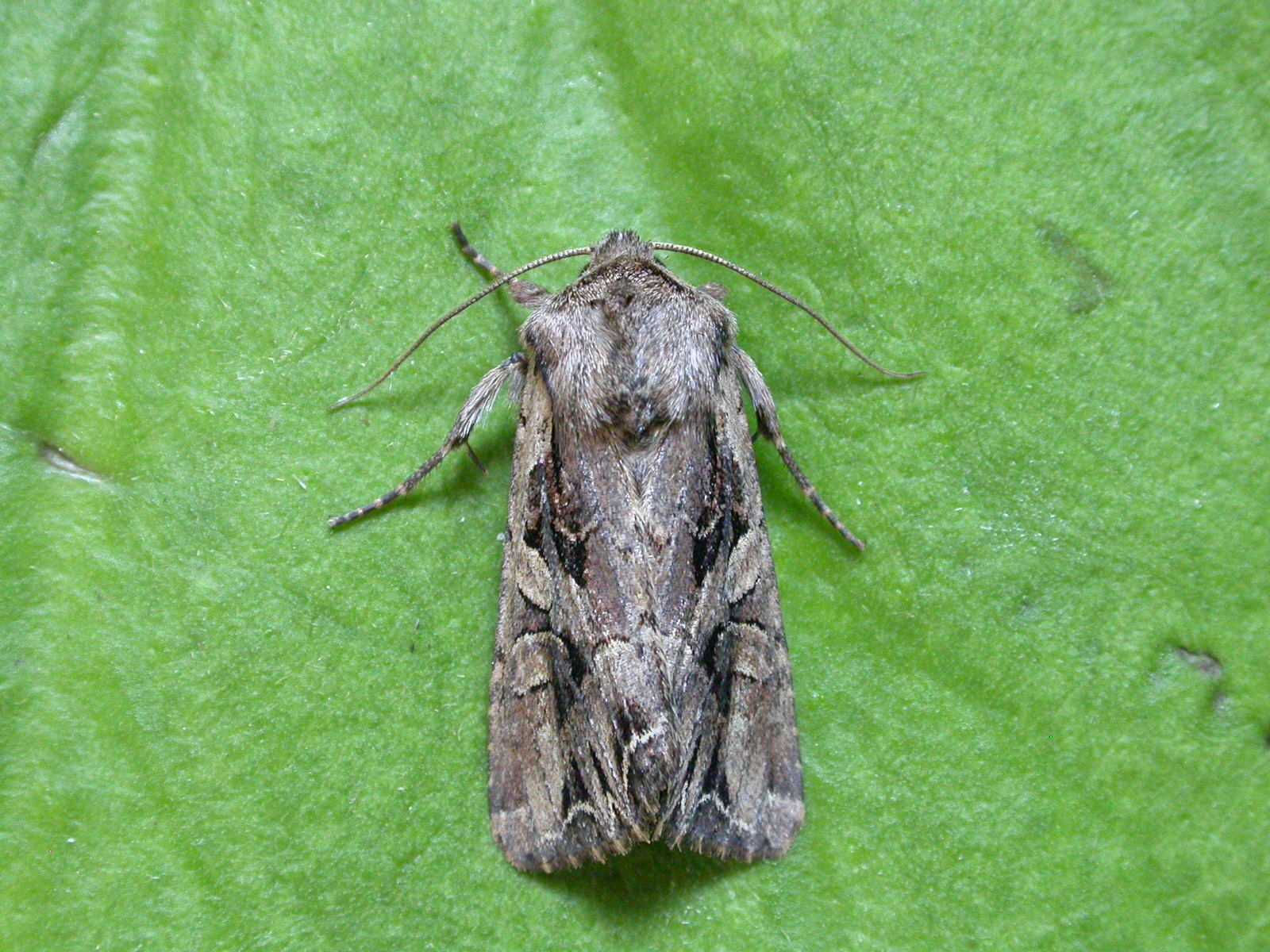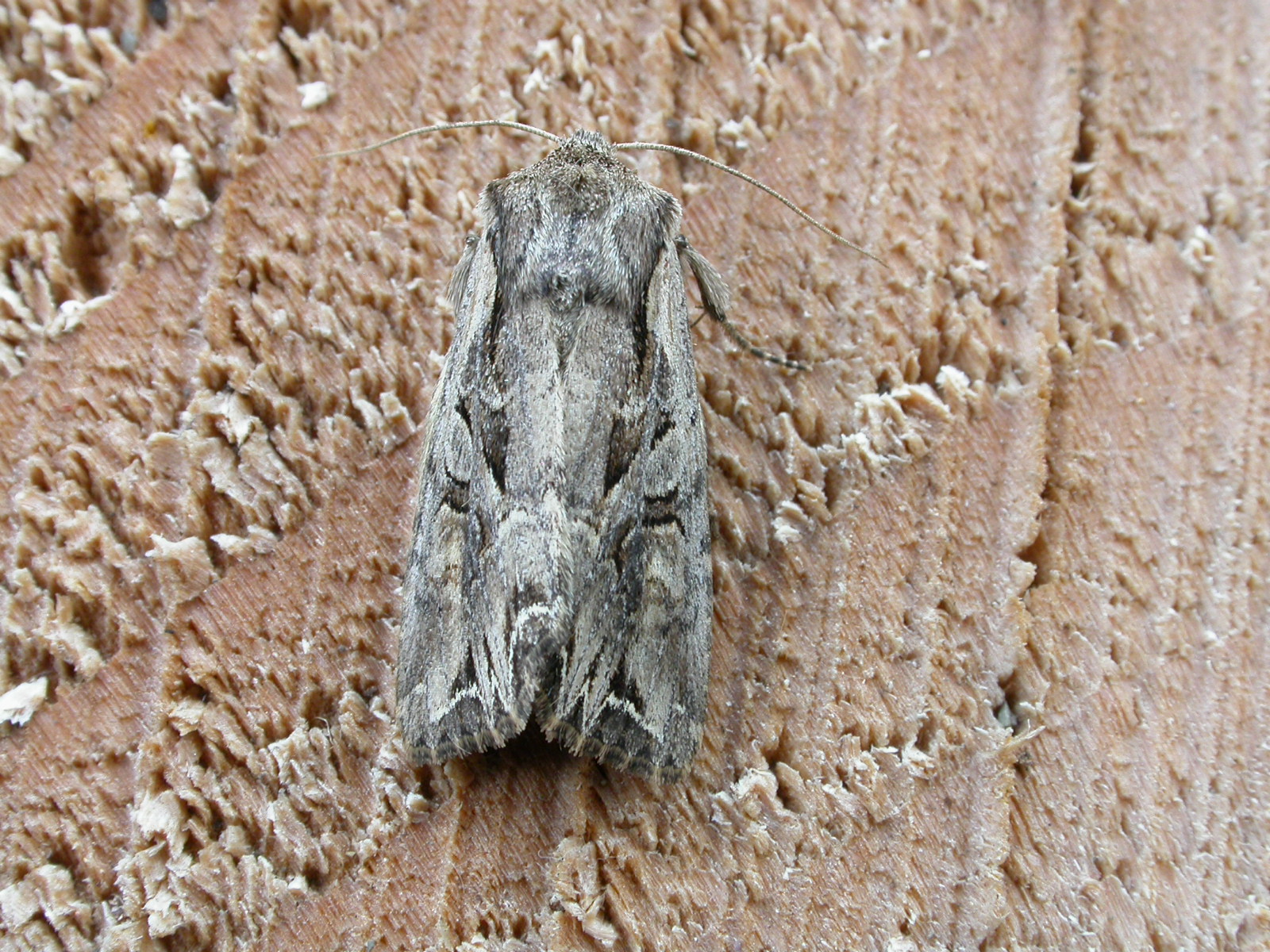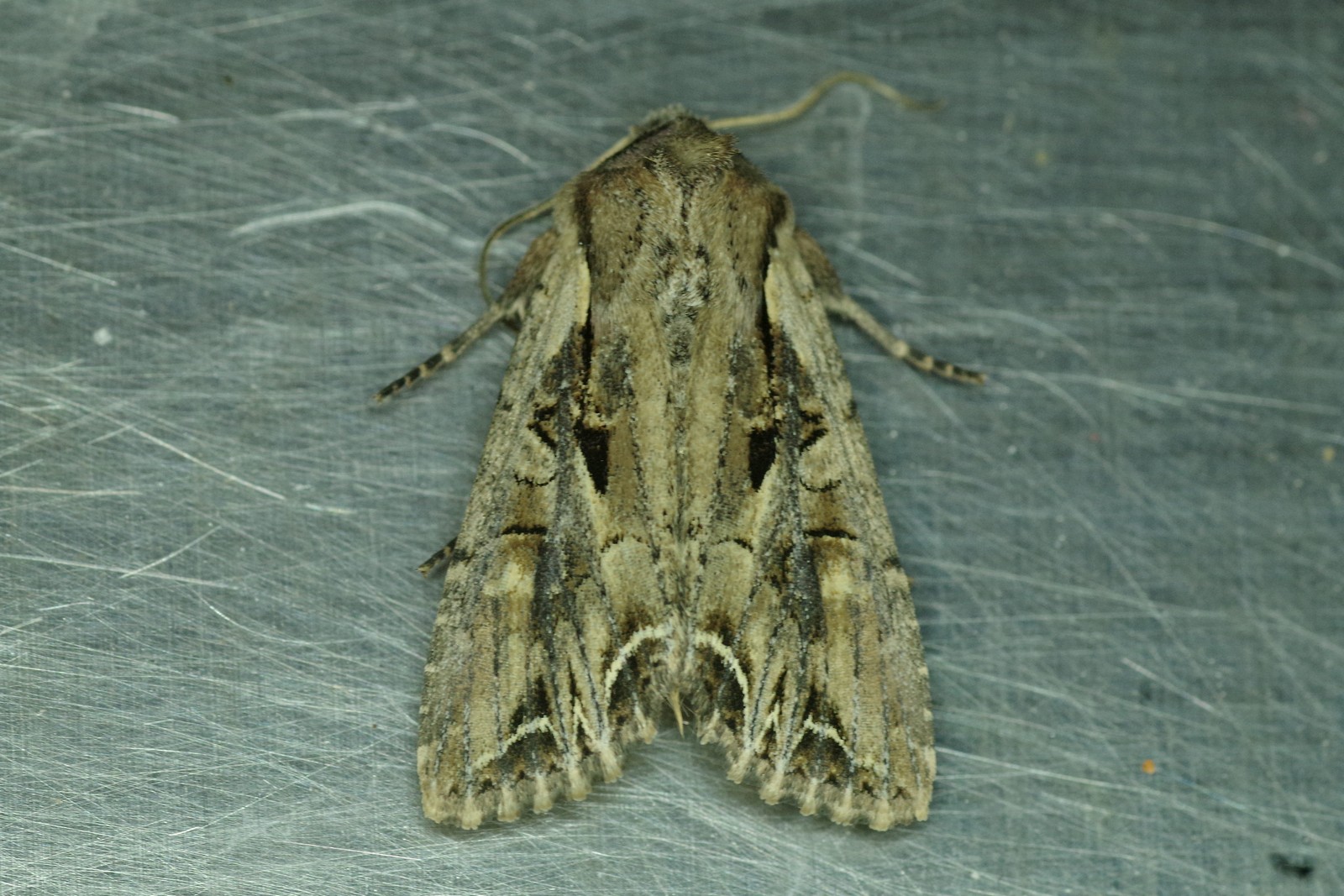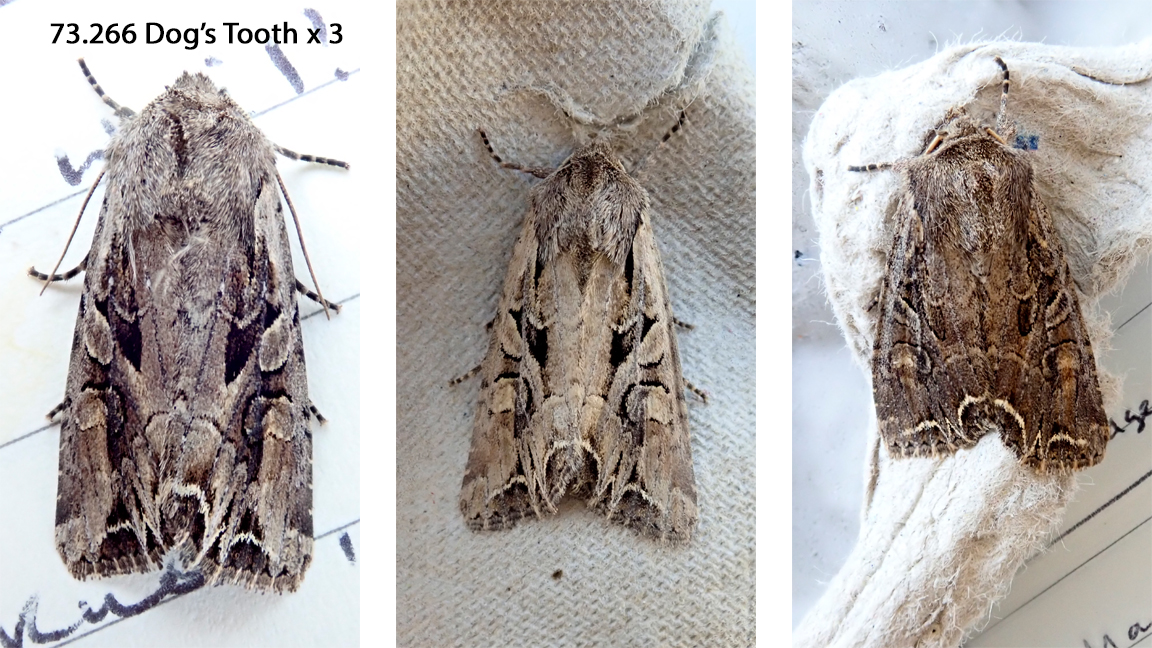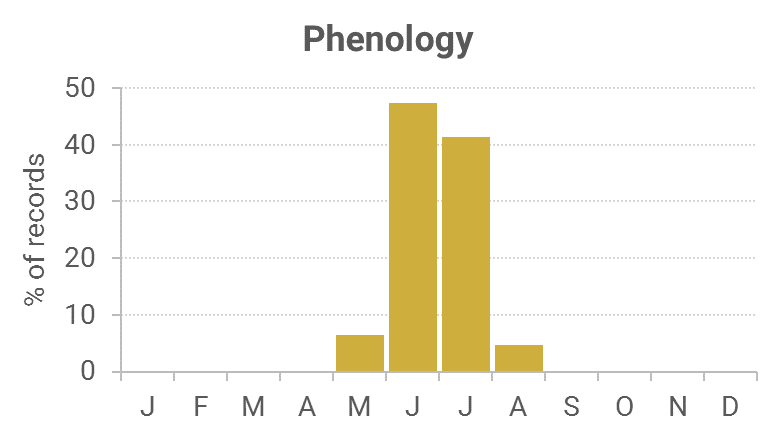Identification
The often solid, dark tooth-like mark in the centre of the forewing, with no central black bar or line is diagnostic.
Recording Method.
Attracted to light, also comes to sugar and flowers.
Life cycle
One generation. Overwinters as a pupa underground. Larvae August to September, feeding at night.
Larval foodplants
Larvae feed on several herbaceous plants, including Common Sea-lavender, Greater Plantain and goosefoots.
Habitat
Wide range of habitats, especially damp habitats such as saltmarsh, wet grassland and moorland.
History
Buchanan White of Perth (1895) listed it as occurring in Colvend and Southwick parishes (VC73). Additional to MOGBI. Sir Arthur Duncan (1909-84) during his lifetime had found it at Tynron (VC72).
During 1975-76 it was caught twelve times at the Rothamsted station at Caerlaverock. Further records came from this site during 1995-2004. From 1995 to 2010, Kirkton (VC72), Mersehead RSPB, Kirkcudbright and both sides of Auchencairn Bay produced most of the records, with a scattering of other records, of which three of them occurred in Wigtownshire at Forest Moor, Claymoddie and Moss of Cree.

